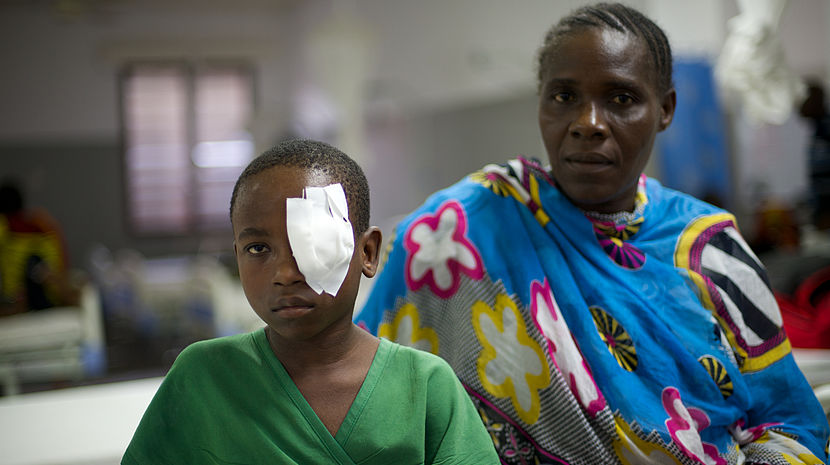World Glaucoma Week 2015

©CBM
CBM celebrates World Glaucoma Week from 8-14 March 2015. The theme this year is 'Beat Invisible Glaucoma'. On this occasion, we speak with our colleague Dr.Heiko Philippin, an ophthalmologist working in Tanzania.
What is glaucoma?
Glaucoma is a disease of the optic nerve, the nerve bundle which transmits everything we see from the eye to the brain. Most of the time, an increased pressure inside the eyeball causes a slow death of numerous single nerve fibers until all of them have died and the person affected is totally blind.
There are different reasons for an increased eye pressure. Usually the drainage of the eye fluid (the aqueous) is reduced. Glaucoma is rare in children. Most of the time, adults suffer from this silent disease, the incidence of which increases with age. If a person has glaucoma, other family members are at a higher risk of also having the disease.
And how serious is glaucoma in Africa?
Glaucoma is the second most common cause of blindness worldwide after cataracts. It is also, unfortunately, irreversible. According to recent reports, the global prevalence of glaucoma for population aged 40-80 years is 3.54%. In 2013, the number of people (aged 40-80 years) with glaucoma worldwide was estimated to be 64.3 million, increasing to 76 million in 2020 and 111.8 million in 2040.
In Sub-Saharan Africa, glaucoma is the second-leading cause of blindness as well, has an early onset and progresses often faster than in other patients.
How does CBM work to eradicate glaucoma?
Glaucoma is the second leading cause of blindness in Africa. The nerve that connects the eye to the brain is irreversibly damaged, and it is usually associated with raised eye pressure, leading to advanced, irreversible sight loss.
Detection of glaucoma is an essential part meaning that whenever a patient is seen because of an eye problem, he is also checked for glaucoma. The earlier the disease is detected the better since damage to the optic nerve is irreversible and what is lost is lost for good. Early stages of glaucoma do not cause any symptoms to the patient so they usually do not seek medical help. The progression of glaucoma can be stopped in most cases by reducing eye pressure. In general there are three groups of treatments, either eye drops, laser treatment or surgical procedures. They are offered depending on the stage of the disease and socio-economic aspects. CBM is also involved in research focussing on optimal treatment in low-income settings.
And how would one ‘Beat Glaucoma’?
Key to beat blindness from glaucoma is early detection and treatment. If members of the family are suffering from glaucoma, every other member of the family around the age of 40 and older should be examined. If people are seen by an eye doctor or other eye care specialist they should ask for an examination of their optic nerve and eye pressure to check for glaucoma. Typically when reading glasses are issued, this can be combined with a glaucoma check-up.
Bio
Dr. Heiko Philippin is an ophthalmologist working for CBM since 2007. He started with three years in Kenya followed by Tanzania where he is currently based. Dr. Philippin is the head of postgraduate training at the eye department of Kilimanjaro Christian Medical Centre (KCMC) in Moshi. He and his colleagues run a 4-year residence program for medical students from all over Sub-Saharan Africa who want to become eye doctors. Besides training he also examines and operates patients and is involved in research.